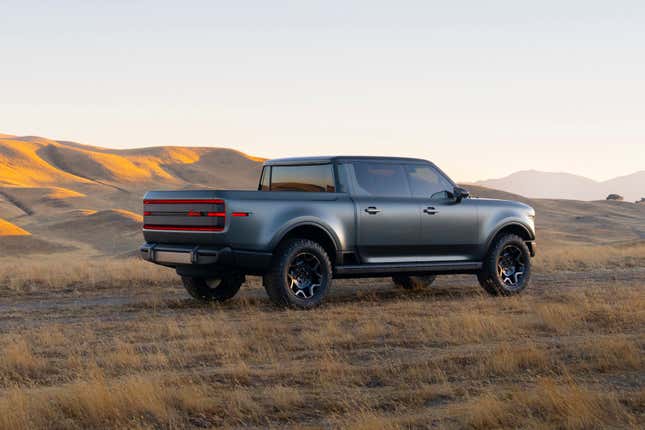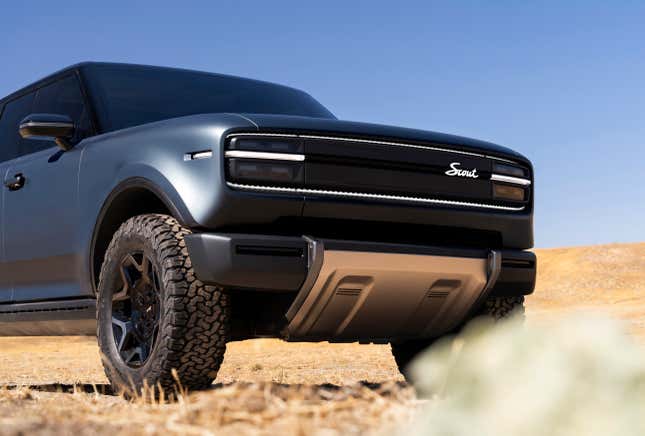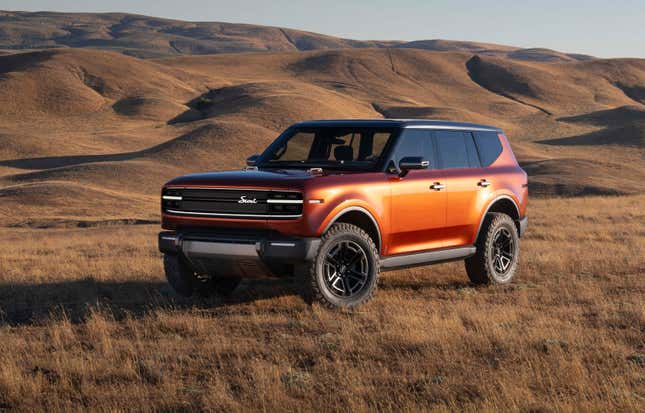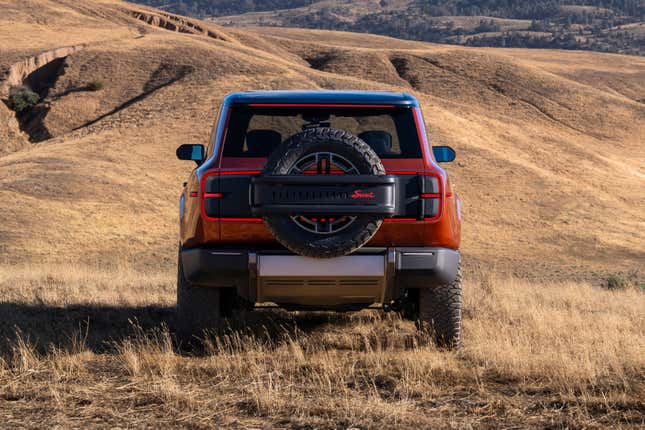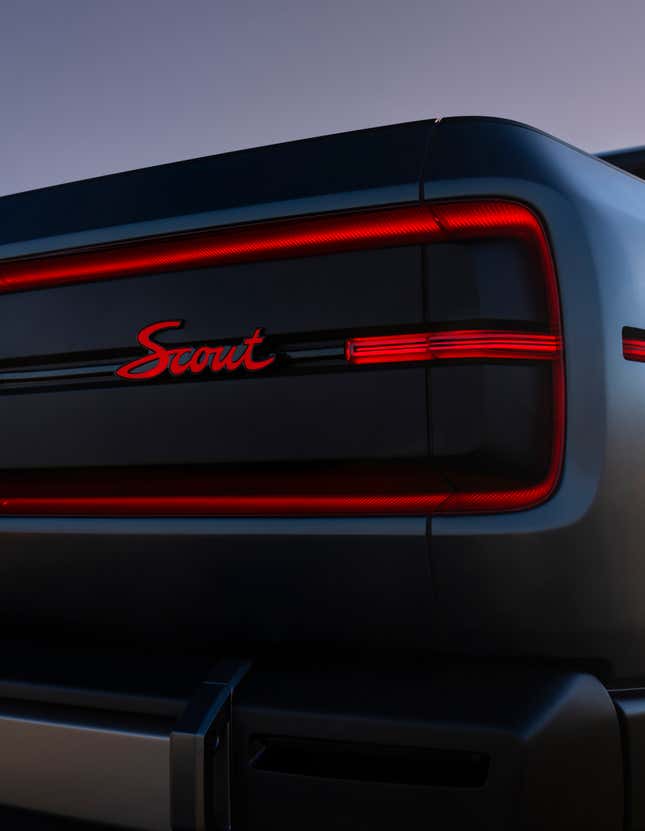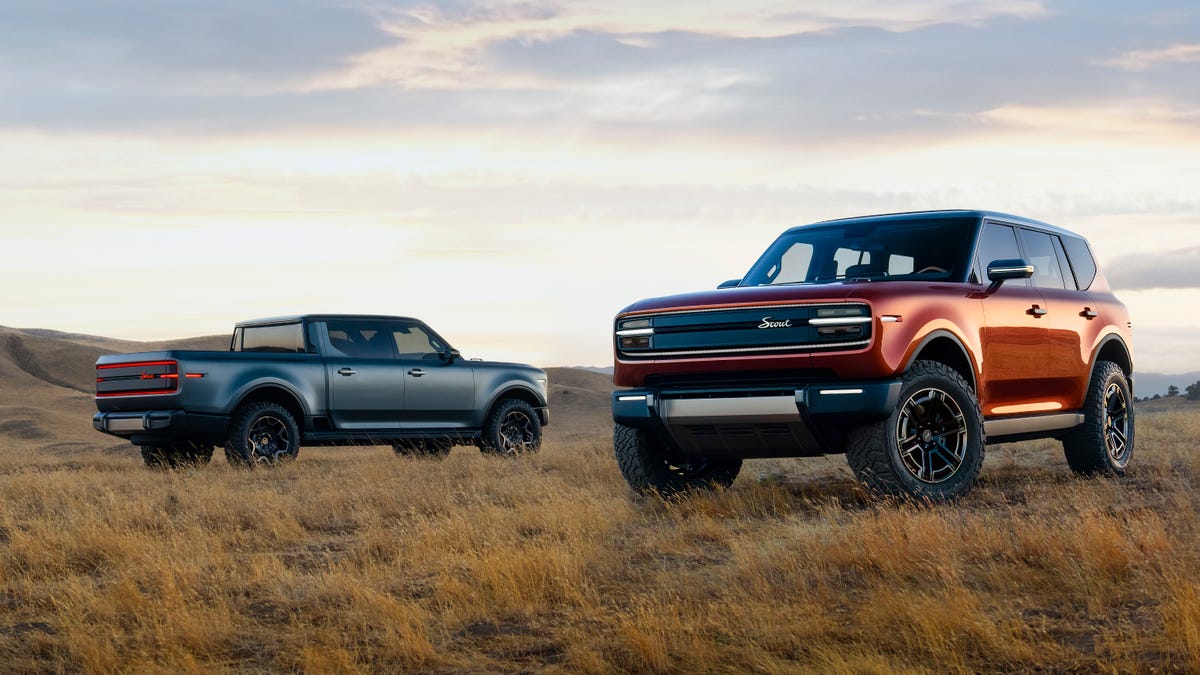The Volkswagen Group made waves back in 2022 when it announced it would be reviving the Scout nameplate for a new brand of American-built fully electric trucks and SUVs, but we hadn’t gotten much concrete info about the upcoming Scouts beyond some teasers and learnings gleaned from talking with the CEO. Until now, that is. Enter the new Scout Terra pickup and Traveler SUV — both names taken from original International Harvester models — which were just revealed at a sprawling estate outside Nashville. Technically these are just concept vehicles, but Scout representatives promise they’re quite close to the production models that will launch in 2027.
We don’t have many powertrain details yet, but the electric Scouts will have an electric motor at each axle and an 800-volt battery pack of unknown size. The brand is targeting a maximum torque figure of 1,000 pound-feet, which will send the trucks from 0 to 60 mph in as little as 3.5 seconds and allow them to climb 100-percent grades. No horsepower figures were given, and there will surely be lower-powered versions offered. Charging will be accomplished with an NACS port, and the Scouts will have 350-kW fast-charging and bi-directional charging capabilities. Maximum range will be a Scout-estimated 350 miles.
In addition to the standard fully electric setup that had been promised from the start, Scout surprised us by announcing that both the Terra and Traveler will be offered with an optional range-extender, a small gas-powered engine that acts as a generator for the electric motors and battery and will increase the maximum range to more than 500 miles. Scout is calling this EREV (extended range electric vehicle) setup the Harvester, a callback to the company’s roots, and it says going for the EREV will maintain the packaging and performance benefits of an EV. In order to accomplish that, my guess is it will be a three- or four-cylinder engine mounted somewhere around the rear axle, under the pickup bed or SUV floor alongside a probably small fuel tank, to retain the interior packaging and frunk.
Regardless of powertrain choice, the Scouts will have serious capabilities and real truck attributes. The body-on-frame platform is newly developed just for Scout and seemingly won’t be used by any other Volkswagen Group products (though who knows how long that will last), and it has a solid rear axle. The Terra will be able to tow more than 10,000 pounds while the Traveler will pull over 7,000 pounds, and both models will have close to 2,000 pounds of payload capacity. Scout says the trucks will have over 12 inches of ground clearance, almost three feet of water fording capability and “competitive” approach and departure angles. Other goodies include a front sway bar disconnect, mechanical front and rear lockers, and tires up to 35 inches in size. Scout says there will be different suspension options, but hasn’t said what they will be. Available from the factory will be a range of accessories like auxiliary lights, off-road bumpers with a heavy-duty winch and side steps. Scout will also have powered accessories that can be controlled through interior switches or the mobile app.
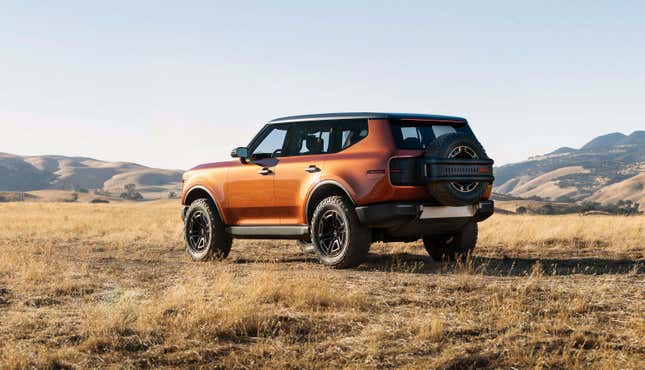
All of that is well and good, but if the design is a flop none of it matters. Luckily, I think Scout’s Michigan-based design team, lead by former Jeep designer Chris Benjamin, absolutely nailed it. Both the Terra and Traveler are the right mix of retro and modern, with enough throwback cues to tie into the old Scouts without being too kitschy. Unsurprisingly, from the B-pillars forward the two models are identical, and they both look pretty huge. Scout hasn’t given any dimensions yet, but the Terra has a 5-foot-5-inch bed, a whole foot longer than the Rivian R1T’s. The front overhangs are super short and the hoods aren’t too long either, but both Scouts have a frunk that is big enough to hold golf clubs, a gym bag and a cooler.
The Scouts have a distinctive upright face with a black “mask” that’s a nice nod to the original models’ wide grilles. A serrated light strip surrounds the entire mask, and the rectangular headlights at the ends have a horizontal light strip bisecting them that is then matched by a small marker light on the front fender edge. The rear ends have similarly sized and shaped masks and light setups, which I think looks especially cool on the pickup. The company stuck with a classic Scout script for the badging, which is offset and illuminated at both ends.
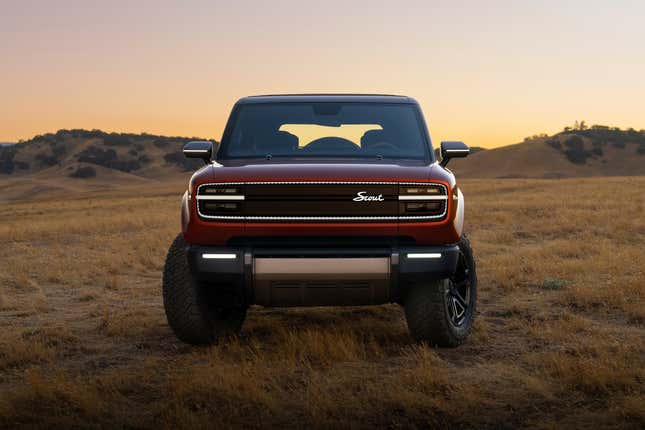
Rugged types will be happy to see that the Scouts have real bumpers protruding from both the front and rear ends, with skid plate elements, prominent tow hooks and integrated lights. The side skirts are thick black plastic, but otherwise there’s not much in the way of aggressive off-road styling — Scout says it wanted the trucks to “define their rugged capability without add-on cladding or other adornments.” The fenders are really nicely flared, with only a slim plastic bit at the edges, and the Scouts have softly sculpted broad shoulders.
The Traveler’s rear quarter window kicks up at the thick D-pillar, a great tie-in with the old Scouts, and the show car has a contrasting roof that looks great. One of the best details on the Traveler is the split tailgate, which creates a nice spot to sit on or load items into the seemingly spacious cargo area, and it has a spare tire carrier that swings out separately and allegedly has “minimal impact” to the aerodynamics. The Terra has an underbody spare carrier that can hold tires up to 33 inches, or a bed-mounted carrier for the 35-inch all-terrains. That bed has two 120-volt power outlets and a 240-volt outlet, and the Terra has steps in the bedside right behind the rear doors and well-integrated grab handles on each side of the rear window that ape the shape of the side windows.

Annoyingly, Scout only sent two photos of the interior, both of the Traveler, but it looks really good. Yes, there is a big digital gauge cluster and an even bigger central infotainment touchscreen, but Scout put a big emphasis on having real physical controls throughout the cabin, like a row of toggle switches and knobs below the screen. The screens are framed by two horizontal bars reminiscent of the dashboards in old Scouts, and the multi-tiered center console has lots of storage space and USB-C ports. It’s got normal air vents, too!
One of the biggest retro touches is the availability of a bench seat for the front row, which will be offered on both the Terra and Traveler in place of that center console. Scout will also offer the Traveler with what it calls the Cabana Top, a sliding fabric sunroof that offers one of the biggest openings of any SUV. You’ll also be able to spec your Scout with a panoramic glass sunroof that thankfully has a powered sunshade. There are a number of buttons and switches at the front of the roof, along with a cool spherical compass.

I really like the ’70s-style steering wheel that has rotary knobs and the start/stop button integrated in the lower section, and the shifter is column-mounted to provide more interior space. This show car has an fantastic mix of tan leather and grey fabric throughout, with plenty of contrasting stitching and aluminum accents, but crucially lower sections are made of more durable plastics so you won’t feel bad about beating them up. Scout says the interior is made with sustainable materials, though no details were given.
The personalizable infotainment system is called the Scout Community UX, described as being “flexible, configurable and easy-to-use” and built on a “modern zonal software architecture” with over-the-air updates and remote diagnostics. We can see a huge map view dominating the screen, and a row of shortcut buttons at the bottom for commonly used features and systems. The speedometer display looks to be a retro horizontal design, which I’m into.
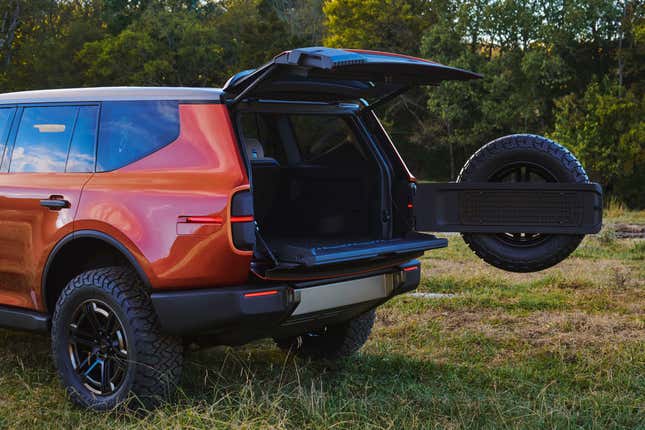
Scout says both the Traveler will have retail prices starting at under $60,000, with the figures going as low as $50,000 with available incentives — that means the starting price will likely be $57,500, with the federal tax credit taking it to the magic $50,000 mark, and those prices probably don’t include destination. The Terra, meanwhile, will also start under $60,000 and go as low as $51,500 with incentives. If Scout can stick to those numbers, that’ll be a pretty killer price, undercutting current electric trucks like the Rivian and Ford F-150 Lightning. Of course, higher-end models will certainly be a lot more expensive, and we don’t know how much the range-extender will add onto the price. The company is accepting reservations now to the tune of a refundable $100 fee, which will let you pick your model and powertrain and reserve your spot in line.
As for how sales and servicing will work, Scout’s doing it similarly to other electric startups by operating with a direct sales model. Scout promises “full price transparency” and a seamless online purchasing experience that can be accomplished in minutes. There will be an “exclusive” Scout retail network consisting of dedicated retail spaces and Workshops that will handle hands-on experiences, test drives and servicing. Scout says 80 percent of repairs can be completed outside of the the Workshops, seemingly with at-home servicing, and the trucks will have “competitive cost of ownership through robust repairability.”
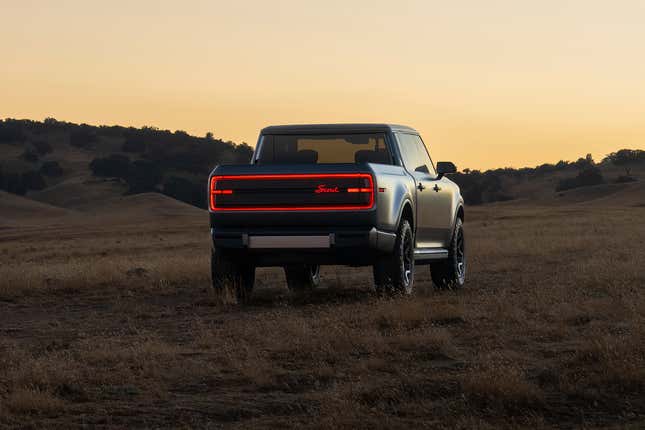
The groundbreaking of Scout’s brand new factory in South Carolina only just occurred earlier this year, and while production was initially set to start in 2026, that has been pushed back to some time in 2027 — a date the company says is based on current projections and subject to change. Therein lies one of the biggest problems with these new trucks. By the time they finally enter production, we’ll have seen some big leaps in EV technology in capability. Lots of companies are working on solid-state batteries that will launch over the next few years, and hell, you can buy a Rivian right now that has a range of over 400 miles.
Still, I think the new Scouts are awesome, and I think they still will be awesome when they hit the roads a few years from now. Volkswagen Group easily could have fucked this up, and at least from what we know so far, it doesn’t seem to have. American consumers really do love and want legitimate trucky pickups and SUVs, and that is what the reborn Scout is delivering.

